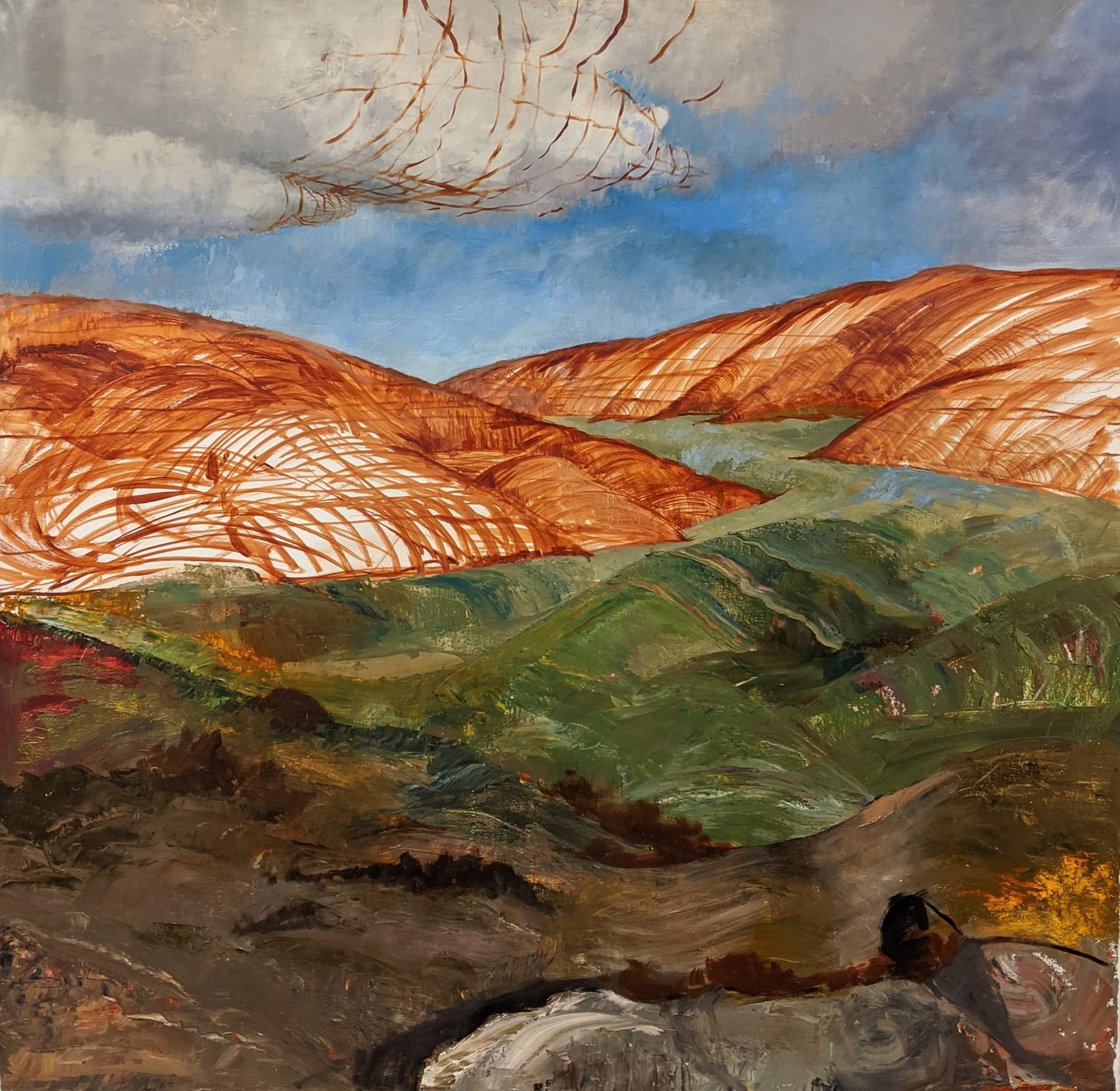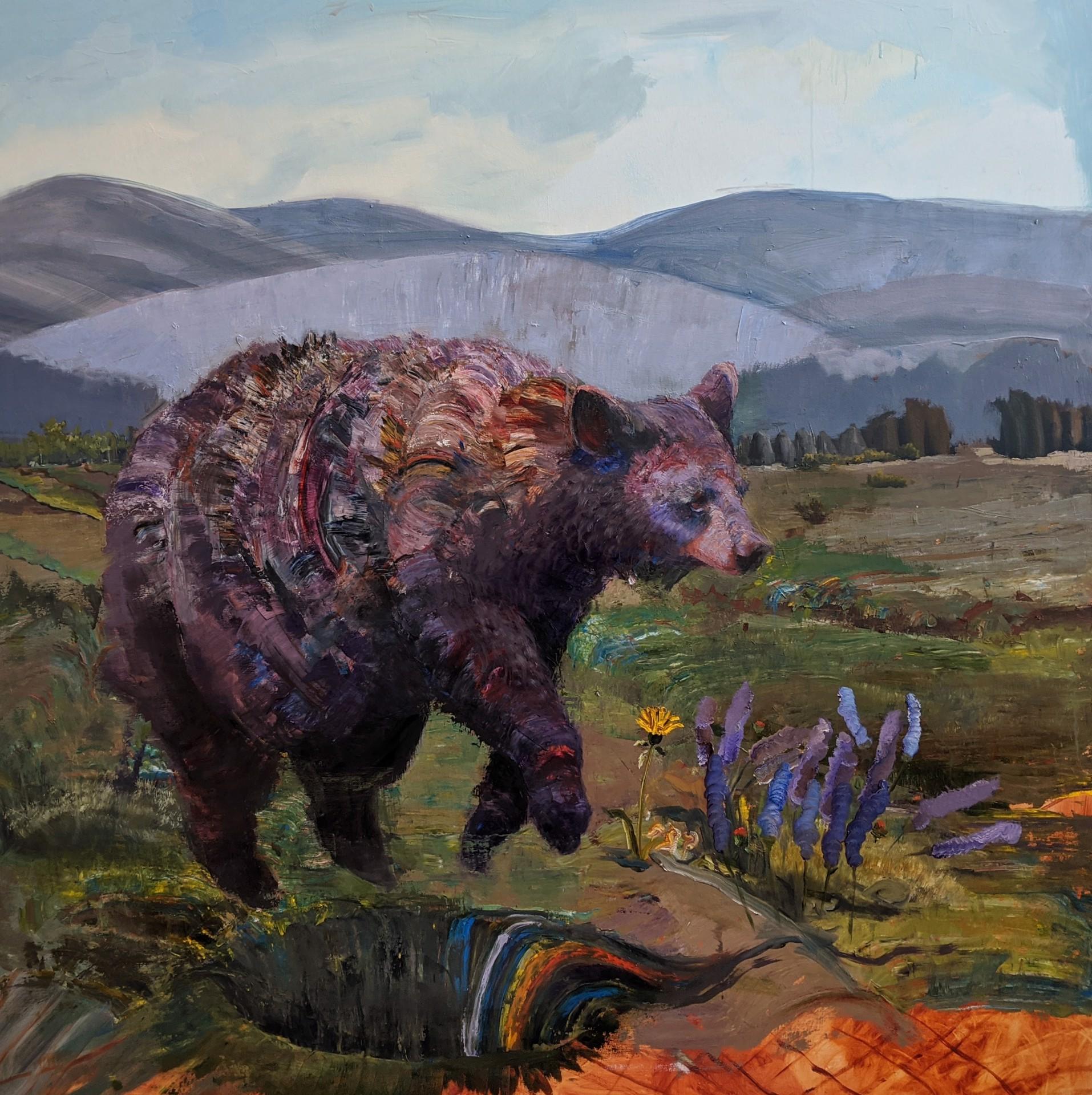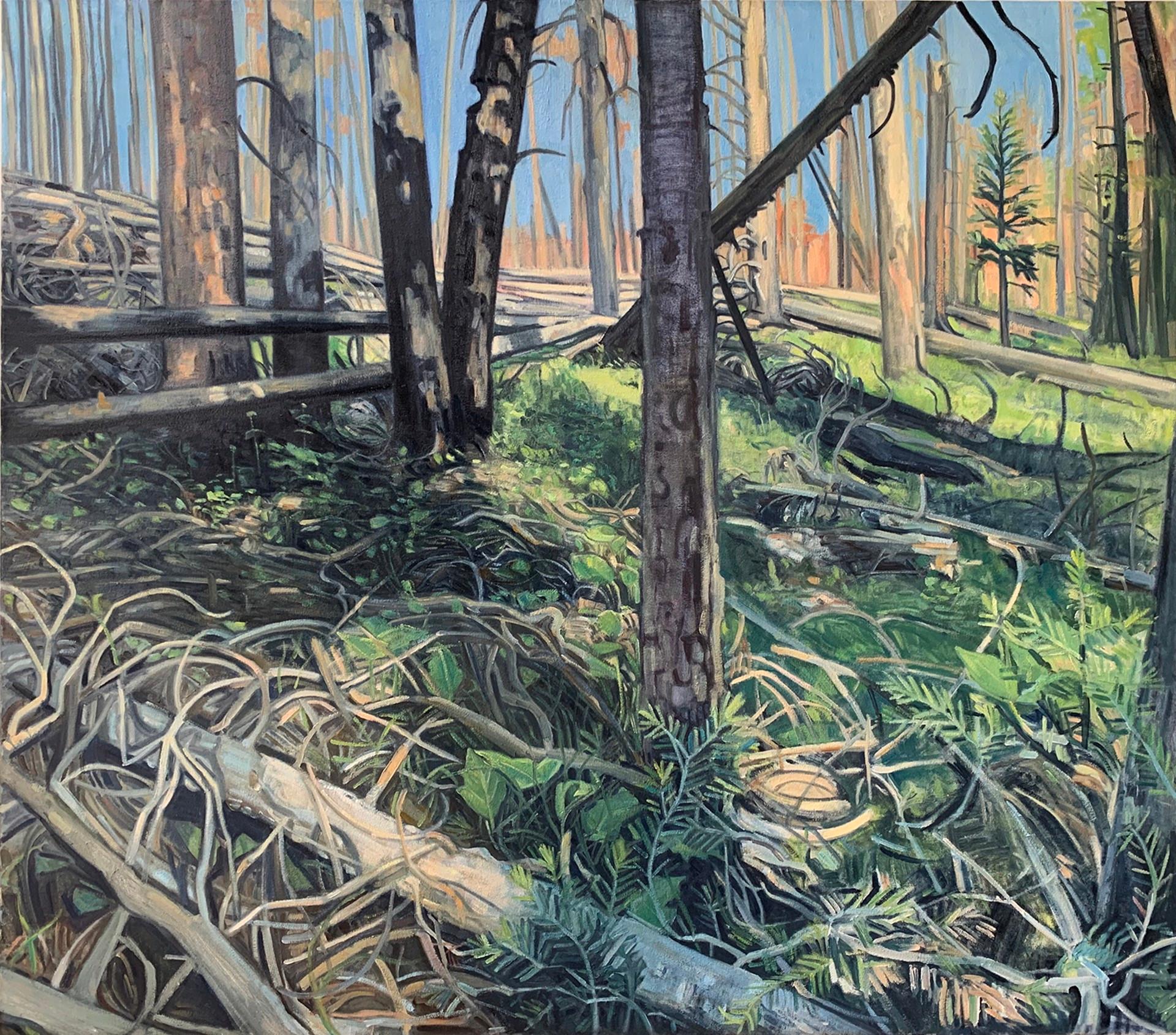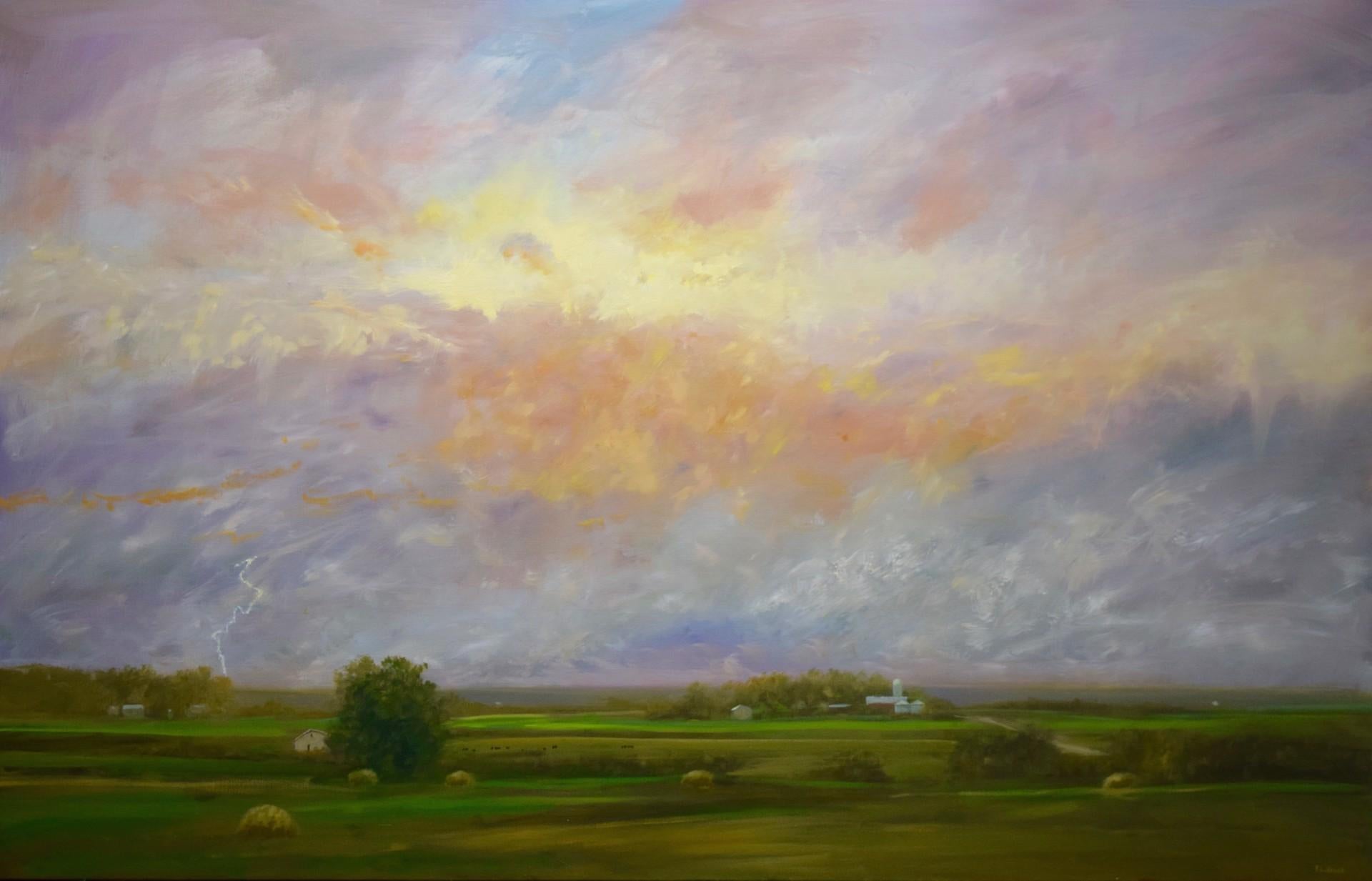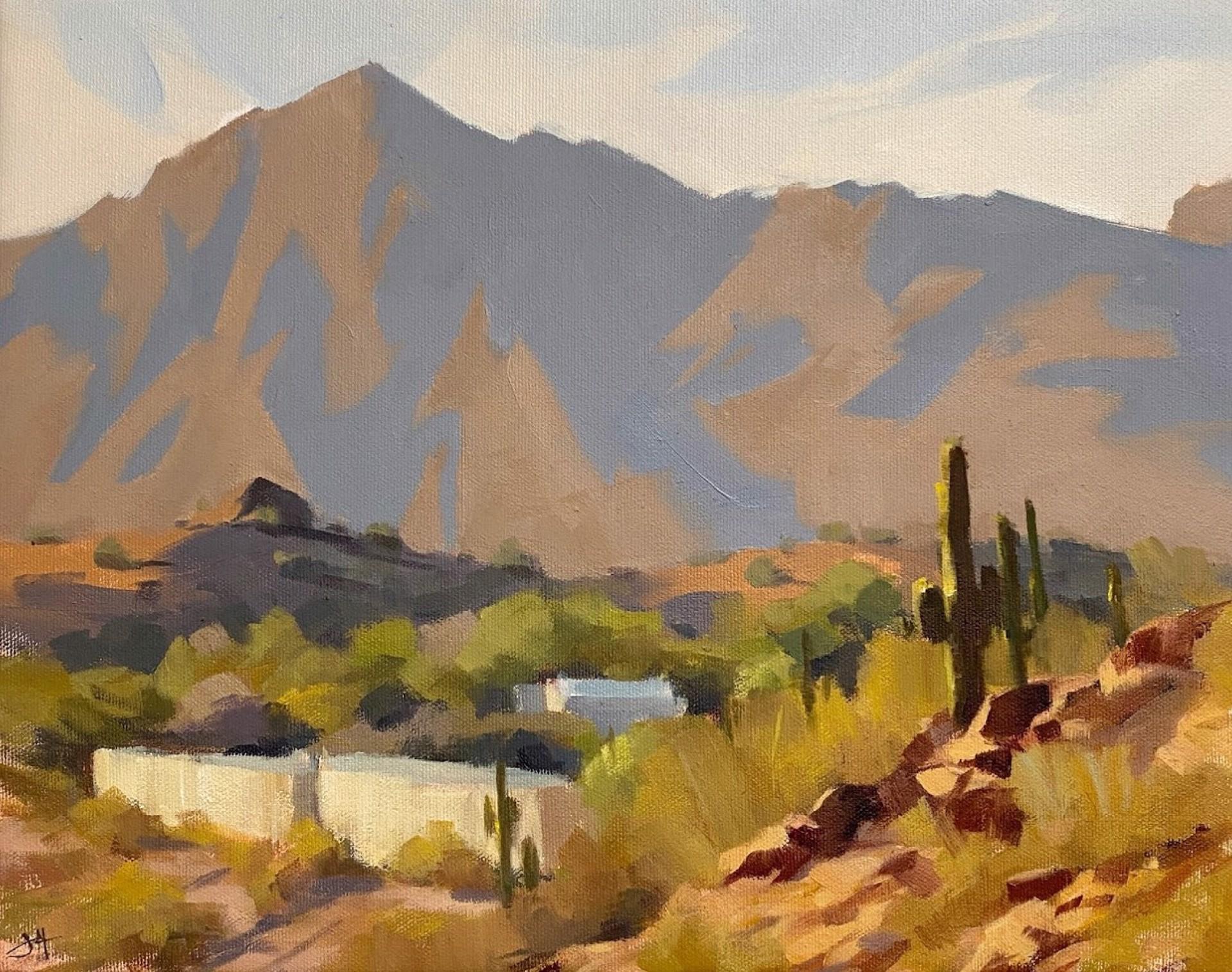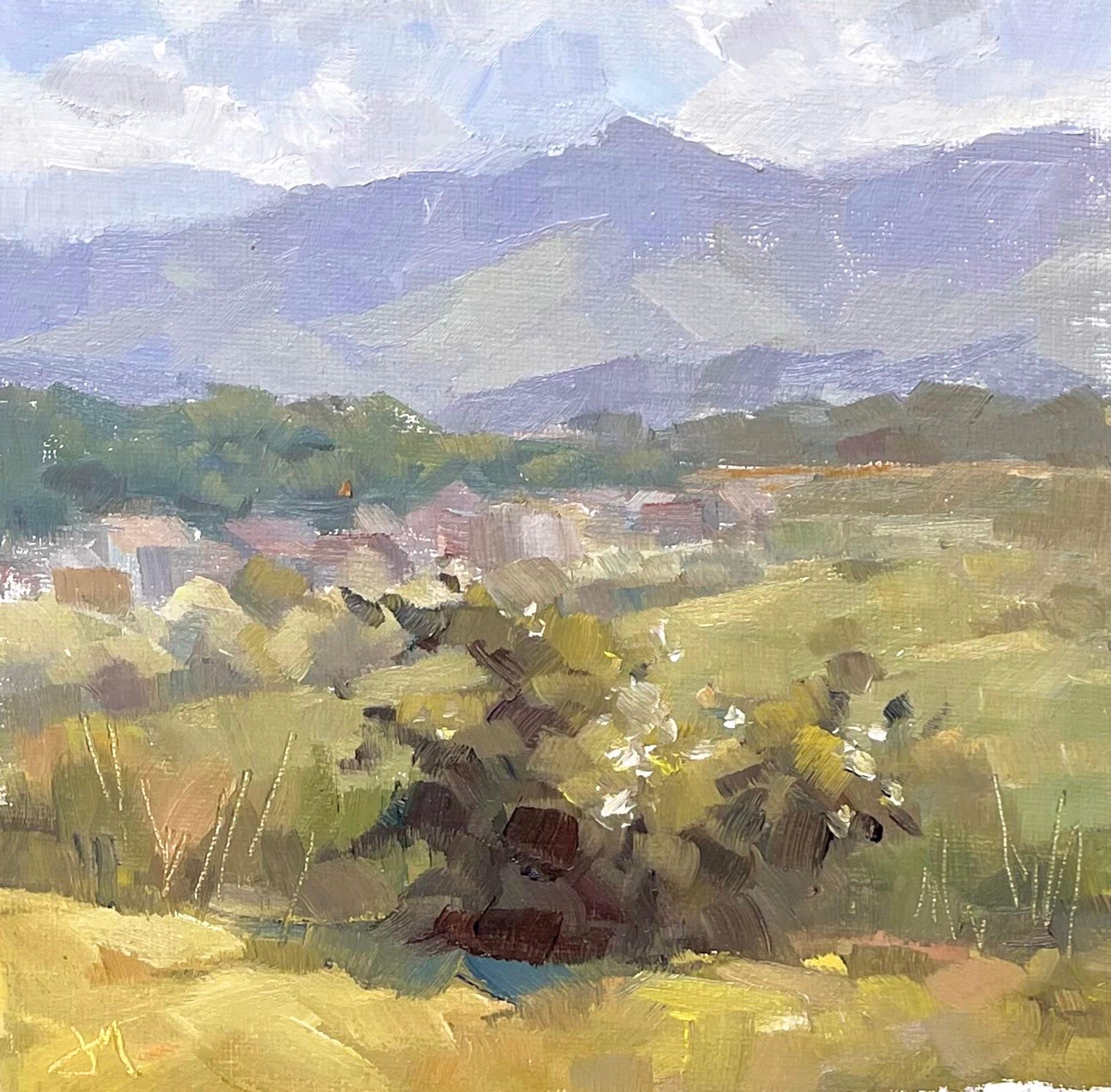Marsha Whitesides PiperNutmeg in Situ2020
2020
About the Item
- Creator:
- Creation Year:2020
- Dimensions:Height: 30 in (76.2 cm)Width: 40 in (101.6 cm)
- Medium:
- Period:
- Condition:
- Gallery Location:Denver, CO
- Reference Number:
- ShippingRetrieving quote...Ships From: Denver, CO
- Return PolicyA return for this item may be initiated within 7 days of delivery.
- View from the NestBy Caitlin HurdLocated in Denver, COView from the NestCategory
21st Century and Contemporary More Art
MaterialsCanvas, Oil
- Bear I Am Afraid OfBy Caitlin HurdLocated in Denver, COBear I Am Afraid OfCategory
21st Century and Contemporary More Art
MaterialsOil, Canvas
- Undergrowth, RegrowthBy Ivy HickamLocated in Denver, COUndergrowth, RegrowthCategory
21st Century and Contemporary More Art
MaterialsCanvas, Oil
- Approaching StormLocated in Denver, COCategory
21st Century and Contemporary More Art
MaterialsOil
- Desert WatchBy Judd MercerLocated in Denver, CODesert Watch, 2021Category
21st Century and Contemporary More Art
MaterialsOil
- Last MileBy Judd MercerLocated in Denver, COLast Mile, 2021Category
21st Century and Contemporary More Art
MaterialsOil, Panel
- Portrait Gentleman Black Coat Orange Sash, Dutch Old Master, Oil on Panel c.1650By Bartholomeus van der HelstLocated in London, GBThis exquisite portrait of a gentleman depicted in a sumptuous black coat edged with silver and slashed sleeves is an excellent example of the type of portrait fashionable in England and the Low Countries during the 17th century. The confident pose, striking orange sash - the colour of the house of Orange Nassau - and the leather gorget imbue the sitter with a sense of masculinity and power. The profusely decorated costume is of the highest quality and de rigueur of an elite class - the artist has carefully cultivated this portrait to emphasise the sitter’s wealth and standing in the society that he belonged to. The casual pose, with one arm resting on a hip, is much less formal than earlier decades, and it speaks of ‘sprezzatura’ – one’s appearance should not appear laborious, but instead, effortless. The oil on cradled panel portrait can be dated to circa 1650 based on the hairstyle and the attire - small falling collar, short doublet (doublets reduced in size to just below the ribcage in the late 1650’s), and the type of slashed sleeves with the sleeve seams left open to reveal the white fabric. The demand for portraits in the Netherlands was great in the 17th century. Bartholemeus van der Helst was considered to be one of the leading portrait painters of the Dutch Golden Age surpassing even Rembrandt as the most sought-after portraitist in Harlaam. The Dutch Golden Age, roughly spanning the 17th century, was a period when Dutch trade, science, military, and art were among the most acclaimed in the world. Dutch explorers charted new territory and settled abroad. Trade by the Dutch East-India Company thrived, and war heroes from the naval battles were decorated and became national heroes. During this time, The Dutch Old Masters began to prevail in the art world, creating a depth of realistic portraits of people and life in the area that has hardly been surpassed. The Golden Age painters depicted the scenes that their discerning new middle-class patrons wanted to see. This new wealth from merchant activities and exploration combined with a lack of church patronage, shifted art subjects away from biblical genres. Still life’s of items of everyday objects, landscapes, and seascapes reflecting the naval and trade power that the Republic enjoyed were popular. The new wealthy class were keen to have their portraits commissioned and many artists worked in this lucrative field. Such was the popularity of art that everyone had a painting, even the humble butcher, and hundreds of thousands of paintings were produced. By tradition the sitter is Maarten Tromp (1598-1653) who was an Admiral in the Dutch Navy (the reverse of the portrait contains an old handwritten inscription “van Tromp”). Certainly, the distinctive orange sash is similar to those worn by officers of the Dutch army in the Netherlands who served under the Princes of Orange and the House of Nassau. However, it should be noted that the physiognomy differs from other images of Tromp. Tromp was the oldest son of Harpert Maertensz, a naval officer and captain. He joined the Dutch navy as a lieutenant in July 1622 and was later promoted from captain to Lieutenant-Admiral of Holland and West Frisia in 1637. In 1639, during the Dutch struggle for independence from Spain, Tromp defeated a large Spanish fleet bound for Flanders at the Battle of the Downs, which marked an enormous change - the end of Spanish naval power. He was killed in action during the First Anglo-Dutch War in 1653 where he commanded the Dutch fleet in the battle of Scheveningen. Gloves were an absolutely vital accessory and the elaborate pair in this portrait are embellished with threads of silk and precious metals and salmon-coloured lining. He wears only one glove and holds the other, providing an opportunity to better display the cuffs and detail on his right wrist and forearm. The gloves are probably made from the most prized leather which came from Spain, in particular from Cordova. Cordovan leather was tanned with a special vegetal process that left it both highly impermeable and divinely soft. King Charles I, posed in a rather relaxed manner for Daniel Mytens’s portrait in 1631, is wearing gloves and boots in matching Cordovan leather. The hide is thick, but you can see just how supple it is from the way the gauntlet dimples and the long boot legs fold over themselves, rippling and wrinkling at the ankles. Apart from keeping hands warm the use of gloves during the 15th through the 19th centuries were full of symbolism and they were worn regardless of the season. They kept the skin unblemished - soft, smooth hands were considered highly attractive. This combination of necessity and proximity to bare skin made gloves a deeply personal gift and they took on a strong symbolic significance and were regarded as emblematic of fidelity and loyalty for hundreds of years. Such was the importance of their symbolism was that some gloves were never intended to be worn at all. Their luxury made them ideal gifts at court, and so in the 15th and 16th centuries, ambassadors often presented them as symbols of loyalty. Until the mid-19th century, it was customary to give gloves as tokens to guests at weddings and to mourners at funerals. Gentleman often gifted their bride-to-be with a pair of gloves (the obligatory gift) and were handed over at the betrothal and put on display before the wedding took place. It was probably their direct contact with the skin that led to the eroticism of gloves. Not only were pairs often exchanged between lovers, but from the 16th to the 18th centuries, it was common practice to remove one glove and give it as a gift to a favourite. The idea of the item being presented still warm from the wearer’s hand is certainly suggestive. Following the death of King George IV, his executors purportedly found over a thousand mismatched ladies’ gloves among his possessions. The sentiment of a 17th-century poem reveals the popularity of the practice: “Come to our wedding to requite your loves / Shew us your hands and we’ll fit you with gloves.” Such generosity might be pricey for the hosts, but gloves of varying quality could be offered depending on the status of the recipient. Pairs made with the finest Spanish leather might be reserved for immediate family, while coarse sheep’s leather could be distributed among the servants and tradesmen. The apportioning of quality according to class provided a very clear message of the gloves’ intended use. For refined guests, they were decoration; for the lower classes, they were functional. Bartholomeus van der Helst...Category
17th Century Old Masters Portrait Paintings
MaterialsOil, Wood Panel
- Mini Painting 2, Oil PaintingBy Jose H. AlvarengaLocated in San Francisco, CA
Artist Comments
"For this piece, I thought it would be so much fun to articulate a painting within a painting," says artist Jose H. Alvarenga." "The image on display is of a lime in the process of being finished with the real subject next to it."About the Artist
Jose’s soft still life paintings are like visual puns. He creates relationships between objects that evoke both amusement and contemplation in the viewer. By devising a clever dialogue between objects, Jose turns a still life into a story. Jose utilizes a classical realist style with a gentle nod to surrealism through his unique subject selections. He is inspired by everyday objects, particularly those with a quality of nostalgia, memory, or humor. Jose paints out of his Los Angeles area apartment, where he also enjoys playing the keyboard and reading art books.Words that describe this painting: still life, classical, realism, fruit, Harnett, Chardin, lime, still life, classical, representational, oil painting, brown
Category21st Century and Contemporary Contemporary Still-life Paintings
MaterialsOil
- Japanese Elegance, Oil PaintingBy Jose H. AlvarengaLocated in San Francisco, CA
Artist Comments
"In this piece, I was inspired to paint the doll with its beautiful kimono robe and the Japanese girl pictured on the mirror," explains artist Jose H. Alvaren...Category21st Century and Contemporary Contemporary Still-life Paintings
MaterialsOil
- Golden Afternoon, Mount Monadnock, NHBy Erick IngrahamLocated in Milford, NHThis finely detailed landscape of a stone wall and field beneath Mount Monadnock in New Hampshire on a warm summer afternoon was painted by contemporar...Category
2010s Realist Landscape Paintings
MaterialsOil, Panel
- Christ the Savior of the World - Icône 25x32 cmLocated in Geneva, CHGreek icon Oil on wood, gold background 18th / 19th centuryCategory
Late 18th Century Other Art Style More Art
MaterialsOil
- Summer Birch, Oil PaintingBy Lisa ElleyLocated in San Francisco, CA
Artist Comments
"Whether it's fall, winter, spring, or summer it's always time for some colorful birch!" exclaims artist Lisa Elley. A stand of vivid birch trees glows in a b...Category21st Century and Contemporary Abstract Impressionist More Art
MaterialsOil
